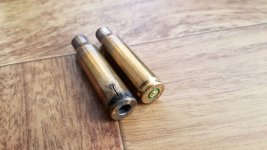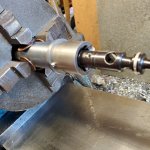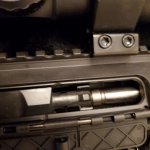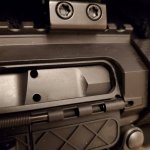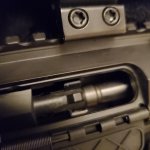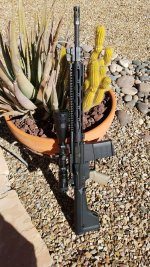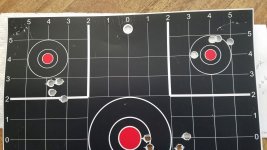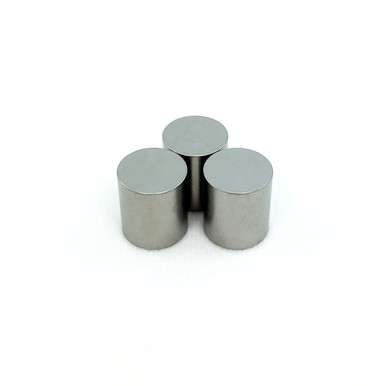Doing some range time with my frankengun LR308. Barrel is a Fulton Criterion 18.5 " mated with old style DPMS Upper and lowers Adjustable gas block.
Ammo was Privi Partisan 165 gr. Have had mildly crater primes on some commercial ammo, never on surplus M80.
This round sounded and shot about right but caused an ejection jam and some smoke seeping from the receiver. No other retrieved case showed anything but the primer like on the right.
I gather a timing issue could cause the bolt to unlock prematurely, but a few hundred rounds, never seen this.
Anyone got an idea? Just put in a JP high pressure bolt to maybe stop the primer cratering.
Ammo was Privi Partisan 165 gr. Have had mildly crater primes on some commercial ammo, never on surplus M80.
This round sounded and shot about right but caused an ejection jam and some smoke seeping from the receiver. No other retrieved case showed anything but the primer like on the right.
I gather a timing issue could cause the bolt to unlock prematurely, but a few hundred rounds, never seen this.
Anyone got an idea? Just put in a JP high pressure bolt to maybe stop the primer cratering.

